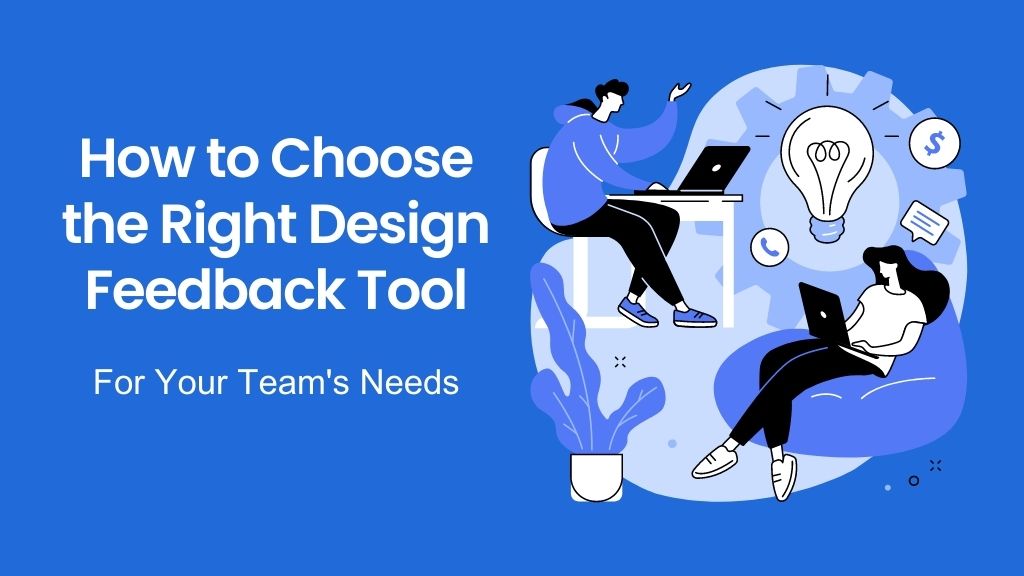
Choosing the right design feedback tool is crucial for optimizing team collaboration and productivity. With numerous options available, it can be challenging to navigate through the choices. This guide provides a comprehensive framework to help you make an informed decision, ensuring that the selected tool aligns perfectly with your team’s specific needs and goals.
Understanding Your Team: Assessing Design Needs and Goals
Assessing team requirements is the first, and probably the most important step. It ensures the chosen design feedback tool aligns with their needs, promoting effective collaboration, streamlined communication, and improved productivity. There are a few things managers should follow to clearly identify the team.
Discuss the importance of understanding the specific needs and goals of your design team.
Teams have diverse needs when it comes to finding the right design feedback tool. Some teams may prioritize real-time collaboration and visual markup tools, while others might value integration capabilities and robust project management features. Understanding these unique requirements is crucial in selecting an online tool that aligns with the team’s objectives.
Consider organizational factors such as team size, project complexity, and collaboration preferences.
Smaller teams might prefer simpler, more streamlined solutions, while larger teams may require advanced collaboration tools and scalability. Project complexity influences the need for robust annotation and version control capabilities. Are you working with freelancing or in-house designers? The security requirements will also vary based on your collaboration methods.

Identifying Key Features and Functionalities for Ideal Feedback Tools
Identifying key features and functionalities is the next step in choosing a design feedback tool that meets your team’s needs. Consider features such as annotation tools, real-time collaboration, version control, browser checking, display mode selection, and integration options with design software. Look for functionalities that facilitate clear and contextual feedback, visual markup tools, and project management capabilities. Assess the tool’s usability, scalability, and customization options. Evaluate if it supports multiple file types, offers mobile accessibility, and provides data security measures. Additionally, consider user permissions and access levels, reporting and analytics capabilities, and notification systems.
Researching Available Design Feedback Tools in the Market
These days, the market is flooded with a ton of design feedback tool options to choose from, so you’ve got plenty of juicy choices. Explore various online tools and evaluate their features, user reviews, and pricing models. Consider factors such as ease of use, intuitive interface, compatibility with your design software, and integration capabilities. A tip from the top manager is to not miss the tool’s scalability, your team might need more room when it grows. Prioritize tools that align with your team’s workflow and address specific pain points. By conducting thorough research, you can identify the design feedback tool that best fits your team’s needs, enhancing collaboration, productivity, and overall design quality.
Support and Documentation: Essential Factors for Choosing a Design Feedback Tool
Next, evaluating support and documentation is a key aspect that shouldn’t be underestimated when selecting a design feedback tool. You, as a team leader will need to consider the availability and responsiveness of customer support channels, such as email or chat. Assess the quality and comprehensiveness of the tool’s documentation, user guides, and tutorials. The good provider often shows a robust knowledge base and resources for troubleshooting common issues. Consider the developer’s track record in addressing customer concerns and providing timely updates. Reliable support and documentation ensure that you have assistance when needed and can maximize the tool’s potential.

Putting Tools to the Test: Trial and Refine Your Design Feedback Solution
During the trial and testing phase, you have the opportunity to experience design feedback tools firsthand. Begin by selecting a few shortlisted tools and conducting trial periods or demos. Evaluate each tool’s user interface, ease of use, and compatibility with your team’s workflow. Engage team members in the testing process to gather their feedback and perspectives. Pay attention to key aspects such as collaboration features, feedback management capabilities, and integration with existing online tools. Assess how well each tool meets your team’s requirements and aligns with their preferred way of working. Use this phase to identify strengths and weaknesses, refine your selection, and make an informed decision on the most suitable design feedback tool for your team’s needs.
Choosing Wisely: Making Informed Decisions for Optimal Design Feedback Solutions
Making an informed decision involves consolidating all the information gathered during the evaluation process. Compare the shortlisted design feedback tools based on their features, compatibility, user feedback, and pricing. Consider factors like usability, integration options, customer support, and scalability. Evaluate how well each tool aligns with your team’s specific needs and objectives. Take into account the potential for enhancing collaboration, streamlining communication, and improving overall productivity. Prioritize the collaboration tool that offers the most comprehensive set of features and functionalities that address your team’s pain points. By considering all these aspects, you can confidently make an informed decision and select the design feedback tool that will empower your team to work more efficiently and effectively.



